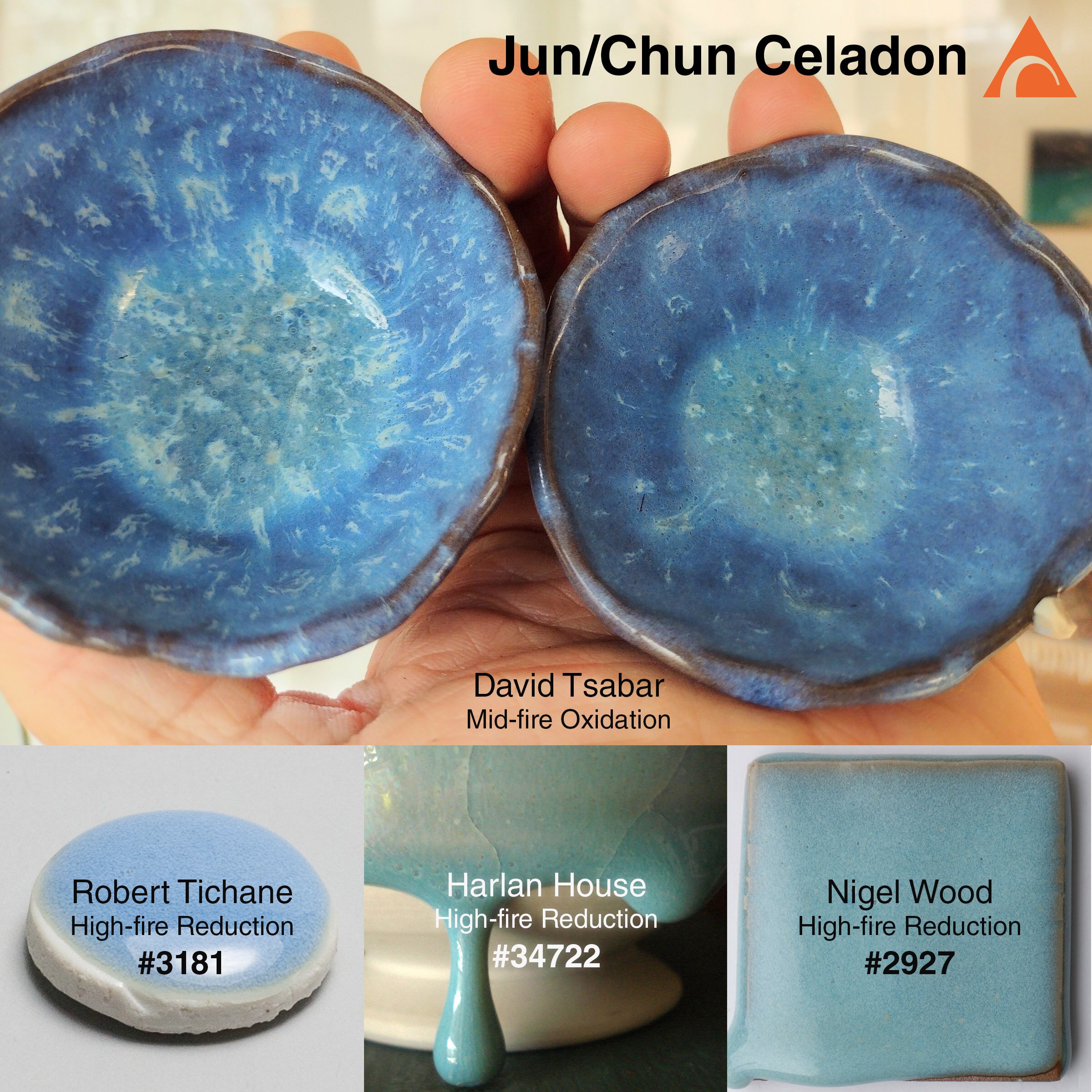An incredible mid-fire oxidation Jun celadon!
Perhaps like many of you, my first forays into glaze chemistry were devoted to producing blue celadons. My copies of Robert Tichane's "Celadon Blues" and Nigel Wood's "Chinese Glazes" became dog-eared and grimy with smudges of iron oxide.
One crucial requirement for producing those blue celadons had nothing to do with the glaze materials but rather the firing and, crucially, the lack of oxygen in the firing atmosphere. Reduction firing can be somewhat of an artform in itself, and countless kiln loads (going all the way back to ancient China) have been ruined by under-reducing or over-reducing, too early-reducing or too late-reducing. How big would the waste pile of broken shards from those centuries of kilns be?
As early as the 1950's, articles were appearing in Ceramics Monthly about Silicon Carbide (SiC) reduced glazes. Tom Turner did some great work on copper reds around 2012. Somehow these glazes never seem to have caught on, though. Lately there's been a bunch of research and testing posted to Glazy by the likes of @pricklypotter, @potterbenstudio and @dreamsofceladon. I've posted some of my own tests in this account and on Glazy.
David Tsabar (@pricklypotter) in particular has done incredible work, not only with pale-blue celadons but also copper reds and Chun/Jun blue celadons. And yesterday he posted a revised Jun glaze that blew me away.
Not many of us can afford to build a gas kiln, let alone the land that you need to build it on. But David's recipes point to a future where all we need to produce stunning reduction effects is a simple mid-fire electric kiln.
Thank you David!
This recipe: https://glazy.org/materials/202506
David's Glazy page: https://glazy.org/u/davidtsabar/recipes

